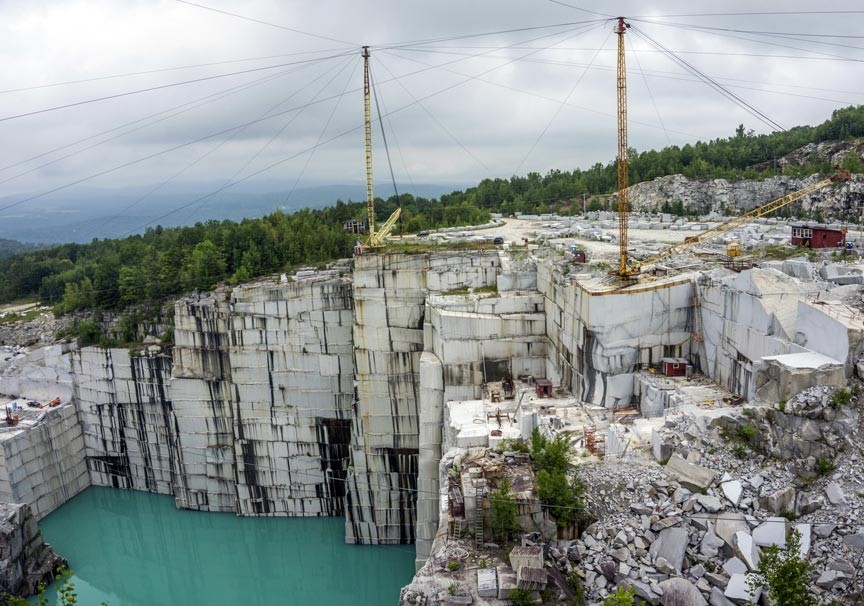Granite Quarries in South Africa Marvels: Checking Out the Quarry Landscape
Granite Quarries in South Africa Marvels: Checking Out the Quarry Landscape
Blog Article
Discovering the Rich History and Sustainable Practices of Granite Quarrying
As we stand on the precipice of uncovering the elaborate tapestry of granite quarrying, a trip via time reveals not just the physical act of extracting rock yet additionally the social and historic value woven right into the really material of this technique. From the old beginnings that laid the structure for contemporary quarrying methods to the sustainable methods that are shaping the future of this industry, each chisel mark on granite surface areas narrates waiting to be discovered (granite quarries in south africa). The legacy of granite quarrying extends much beyond simple removal; it is a testimony to human resourcefulness, strength, and the long-lasting allure of this marvelous stone
Old Origins of Granite Quarrying
Dating back to ancient civilizations, the practice of quarrying granite has actually been an integral part of human history and architectural improvement. The earliest evidence of granite quarrying dates back to old Egypt, where enormous pyramids and detailed sculptures were crafted from this sturdy rock. The Egyptians used primitive devices to extract granite blocks from quarries, showcasing the significance of this material in their monumental building and constructions.
Progressing in background, the Greeks additionally made significant payments to the quarrying of granite. The Greeks used granite in various building wonders, such as holy places and statues, demonstrating their ability in shaping and sculpting this durable stone. The Romans even more fine-tuned the strategies of quarrying granite, using sophisticated tools like chisels and hammers to extract and form granite for their renowned structures.
With the centuries, the technique of quarrying granite has developed, with modern technologies enhancing performance while preserving the ageless charm of this all-natural stone - granite quarries in south africa. From old civilizations to contemporary builders, the tradition of granite quarrying proceeds to form our world
Development of Quarrying Techniques
The development of quarrying methods has actually been marked by a continual progression towards greater effectiveness and accuracy in drawing out granite. From the basic approaches used by our ancestors to the advanced innovations made use of in contemporary quarrying operations, the sector has actually undergone considerable developments. Early quarrying methods entailed manual work with fundamental devices such as chisels, hammers, and wedges to remove granite blocks from the earth. As people advanced, methods like fire-setting and primitive nitroglycerins were presented to help with the extraction process.
In more recent times, the arrival of machinery changed the quarrying industry, allowing much faster extraction rates and boosted productivity. Technologies such as diamond cord saws, high-pressure water jets, and pneumatic drills have ended up being standard in contemporary quarries, enabling for specific cutting and decreased waste. Moreover, innovations in computer-controlled equipment and 3D modeling have enhanced quarrying procedures, leading to minimal environmental effect and boosted sustainability techniques. As the demand for granite continues to rise, the development of quarrying methods stays important to conference sector requires successfully and sustainably.
Cultural Importance of Granite
Granite holds a profound cultural significance across various people as a result of its long-lasting existence in architectural work of arts and prized monoliths. From the marvelous pyramids of Egypt to the complex carvings of the Angkor Wat temple in Cambodia, granite has actually been a material of choice for expressing majesty and long life in cultural heritage. In ancient Rome, granite columns embellished temples and public buildings, signifying stamina and permanence. The social relevance of granite prolongs past its physical features; it symbolizes resilience, security, and timelessness, making it an icon of withstanding legacies and practices.

Lasting Practices in Quarrying
Amidst the abundant background of granite quarrying and its cultural value exists a growing focus on sustainable practices within the sector. As environmental awareness and problems regarding resource deficiency have enhanced internationally, the quarrying industry has actually progressively embraced lasting methods to decrease its effect on the environment and bordering communities.

Furthermore, reclamation and rehabilitation of quarry websites post-extraction are indispensable to lasting techniques. By recovering quarried locations to an all-natural or helpful state, such as producing wild animals habitats or recreational spaces, quarriers can offset the ecological impact of their procedures and contribute positively to the local ecosystem.
Heritage of Granite Quarrying
With a historical backdrop steeped in workmanship and commercial development, what enduring impact has granite quarrying left on the landscape of modern go to this site culture? The legacy of granite quarrying transcends plain removal practices; it has actually formed architectural marvels, city landscapes, and social heritage worldwide. The resilient nature of granite has made it a recommended option for monuments, structures, and framework, standing as a testament to the ability and virtuosity of quarry workers throughout generations.
In addition, the economic impact of granite quarrying can not be ignored. The market remains to supply job opportunity and drive regional economies in areas where granite extraction prevails. It has also stimulated technological improvements in quarrying methods and tools, causing more reliable and sustainable Visit Website methods.
In terms of sustainability, the tradition of granite quarrying consists of initiatives to reduce ecological influences through improvement tasks and responsible resource administration. By stabilizing financial interests with environmental stewardship, the sector makes every effort to guarantee that future generations can remain to profit from this long-lasting natural resource.
Final Thought

Report this page